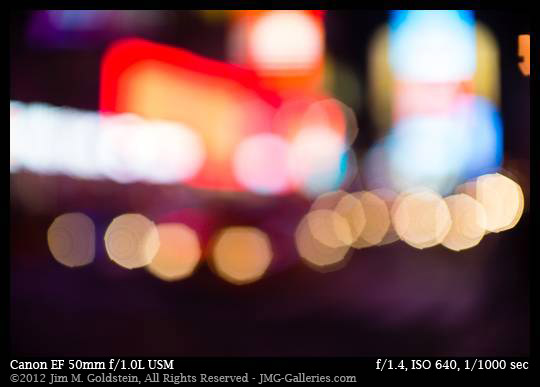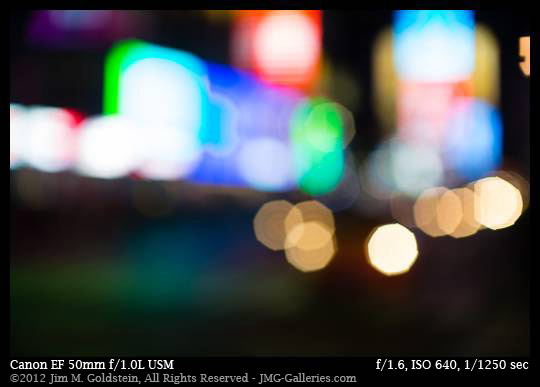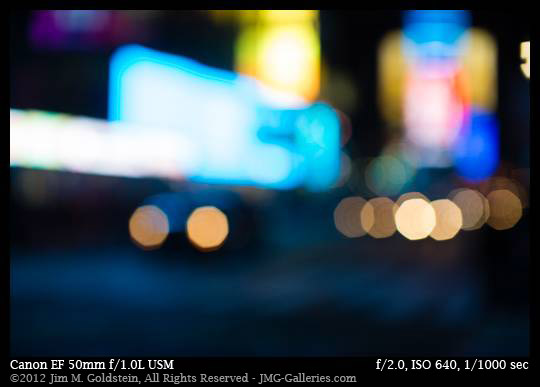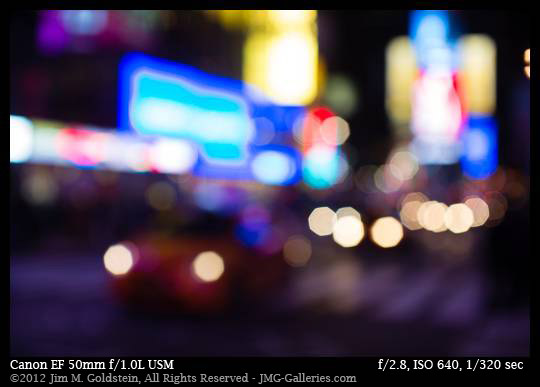When one thinks of a focal length ideal to nature or landscape photography 24mm usually tops the list. Historically use of a 24mm prime lens was seen as the ideal way to go and over the past decade lens technology has improved so much that wide zooms (14-24mm, 16-35mm, etc.) are now the norm. The 50mm focal length on the other hand is seldom thought of as ideal for nature or landscape photography and more so for photojournalism or street photography. In fact it is for this reason that 50mm or most mid-range focal lengths were omitted from my earlier post Reader Question: What lens do you use for your Landscape photographs?

To Be A Leaf – Canon 5D III, 50mm f/1.0L USM at f/1.0, 1/6400 sec at ISO 1600
As of late I’ve been having fun with the 50mm focal length and I’ve been going out of my way to experiment with it. In the process I’ve rediscovered making use of much shallower depth of field in my images. For nature and landscape photographers using wide lenses with deep depth of field (> f/16) is often the norm to keep as much of the scene in focus as possible. With a shallower depth of field (< f/2.0) a narrow plane of focus exists and bokeh becomes a more important visual component. Breaking out of my deep depth of field rut I’ve become increasingly fascinated with learning about the varying qualities of bokeh and it’s led me to purchase a rather rare lens, the Canon EF 50mm f/1.0L USM. I have to admit this particular lens has two qualities that piqued my interest: 1. The extreme bokeh created by the ultra-shallow depth of field it is subject to and 2. It’s ability to gather more light for faster shutter speeds in low light situations (ideal for night photography).
Below is an example night photo taken out of a plane window at 10PM. Visible to the naked eye was the wing and a hint of snow on the mountains. Much of city lights and stars were not visible to the naked eye. What impressed me in this situation is that a nearly pitch black scene could be taken handheld.

Owens Valley Night Aerial – Canon 5D III, 50mm f/1.0L USM at f/1.0, 1/25 sec at ISO 25600
Below is an example of a night video of extreme bokeh at f/1.0
Bokeh Video Test – Canon EF 50mm f/1.0L USM from Jim Goldstein on Vimeo.
To see the difference in bokeh from f/5.6 to f/1.0 in still photos see below

f/1.0 Bokeh – Canon 5D III, 50mm f/1.0L USM at f/1.0, 1/3200 sec at ISO 640

f/1.1 Bokeh – Canon 5D III, 50mm f/1.0L USM at f/1.1, 1/2500 sec at ISO 640

f/1.2 Bokeh – Canon 5D III, 50mm f/1.0L USM at f/1.2, 1/2000 sec at ISO 640

f/1.4 Bokeh – Canon 5D III, 50mm f/1.0L USM at f/1.4, 1/1000 sec at ISO 640

f/1.6 Bokeh – Canon 5D III, 50mm f/1.0L USM at f/1.6, 1/1250 sec at ISO 640

f/1.8 Bokeh – Canon 5D III, 50mm f/1.0L USM at f/1.8, 1/1000 sec at ISO 640

f/2.0 Bokeh – Canon 5D III, 50mm f/1.0L USM at f/2.0 1/1000 sec at ISO 640

f/2.2 Bokeh – Canon 5D III, 50mm f/1.0L USM at f/2.2, 1/800 sec at ISO 640

f/2.5 Bokeh – Canon 5D III, 50mm f/1.0L USM at f/2.5, 1/640 sec at ISO 640

f/2.8 Bokeh – Canon 5D III, 50mm f/1.0L USM at f/2.8, 1/320 sec at ISO 640

f/3.2 Bokeh – Canon 5D III, 50mm f/1.0L USM at f/3.2, 1/250 sec at ISO 640

f/3.2 Bokeh – Canon 5D III, 50mm f/1.0L USM at f/3.2, 1/200 sec at ISO 640

f/4.0 Bokeh – Canon 5D III, 50mm f/1.0L USM at f/4.0, 1/160 sec at ISO 640

f/4.5 Bokeh – Canon 5D III, 50mm f/1.0L USM at f/4.5, 1/160 sec at ISO 640

f/5.0 Bokeh – Canon 5D III, 50mm f/1.0L USM at f/5.0, 1/100 sec at ISO 640

f/5.6 Bokeh – Canon 5D III, 50mm f/1.0L USM at f/5.6, 1/125 sec at ISO 640
.gif)
Copyright Jim M. Goldstein, All Rights Reserved
Breaking the Norm: Canon EF 50mm f/1.0L USM Lens

JMG-Galleries – Jim M. Goldstein Photography